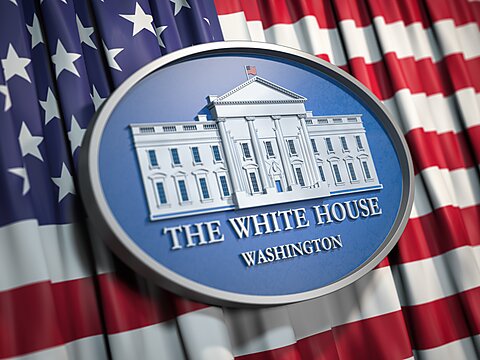Walter Olson
Could bipartisan reform of the National Emergencies Act (NEA) move forward as early as this year?
There might be hope. Jennifer Shutt at States Newsroom, reporting on a Senate Homeland Security hearing held May 22, writes that senators from both parties “appeared to be on the same page about limiting presidential emergency powers” and that bipartisan collaboration on the details could happen “in the coming months.” The committee is controlled by Democrats; ranking Republican member Sen. Rand Paul (R‑KY) is a longtime advocate of emergencies reform.
Gene Healy, senior vice president for policy at the Cato Institute, was among the three witnesses at the hearing. He noted that Congress enacted the NEA in 1976 as
a framework statute aimed at restoring congressional oversight and “returning the United States to normal peacetime processes.” Title I of the NEA brought those four emergencies to a close, sunsetting the authorities they relied upon. Title II of the act imposed procedural strictures designed to cabin presidential emergency powers. To invoke such powers, the president was required to formally declare a national emergency and specify the statutory provisions he intended to rely on. Emergency declarations would expire after one year unless renewed by the president, but could be terminated earlier by presidential or congressional action.
For the most part, the Act failed. One reason is that it does not try to define what a national emergency is, instead leaving the practical drawing of lines to the give and take between Congress and the White House.
Unfortunately for that plan, its main practical mechanism for enforcement was the device known as the legislative veto, under which Congress was accorded power to terminate emergencies by a majority vote of both chambers. But in 1983 the Supreme Court struck down the legislative veto device. With that gone, the president can simply veto any measure that by declaring an end to an obsolete emergency threatens to curtail his power. The result is that Congress can lift an emergency against the executive’s will only by mustering a veto‐proof majority.
That is why presidents go on renewing emergencies at will decades after the original rationale has expired. As Elizabeth Goitein of the Brennan Center noted in her comprehensive testimony,
renewal of emergencies after one year, intended to be the exception, has become the default. Most of the emergencies declared since the National Emergencies Act was passed are still in effect. The average length of emergencies has been close to a decade, with 31 emergencies lasting even longer. The longest‐running state of emergency was issued by President Jimmy Carter in 1979 in response to the Iranian hostage crisis and remains in place today.
As dangerous executive powers go, it’s understandable to focus on the separate Insurrection Act, under which presidents can deploy troops domestically. But Goitein says the NEA leaves the gate open for presidents to assert a wide range of other domestic powers that could prove dangerous, including powers to freeze private bank accounts and control the transportation system and even the Internet under authorities from the old days of telephone and telegraph regulation.
The third witness, Satya Thallam, currently at the Foundation for American Innovation, worked on the law 2015–2019 as a staffer with the Senate Homeland Security Committee. His testimony traces the NEA’s legislative origins, which were distinctly bipartisan, and says part of its cross‐aisle appeal was specifically that it afforded a “policy‐neutral mechanism.”
“Though Democrats and Republicans were ultimately motivated by different specific emergencies they found to be illegitimate, they found common cause in upholding Congress’s constitutional responsibility, no matter who occupies the White House,” said Thallam.
Emergencies reform saw a flurry of bipartisan interest in 2019 when it was the subject of a Cato forum, Cato Policy Report article by Deborah Pearlstein and Ilya Somin, and commentary from Gene Healy, who also wrote a relevant chapter in the 2022 Cato Handbook for Policymakers. On the spending side, Romina Boccia and Dominik Lett recently noted that emergency declarations open the door to profligate and far‐from‐transparent government expenditures.

